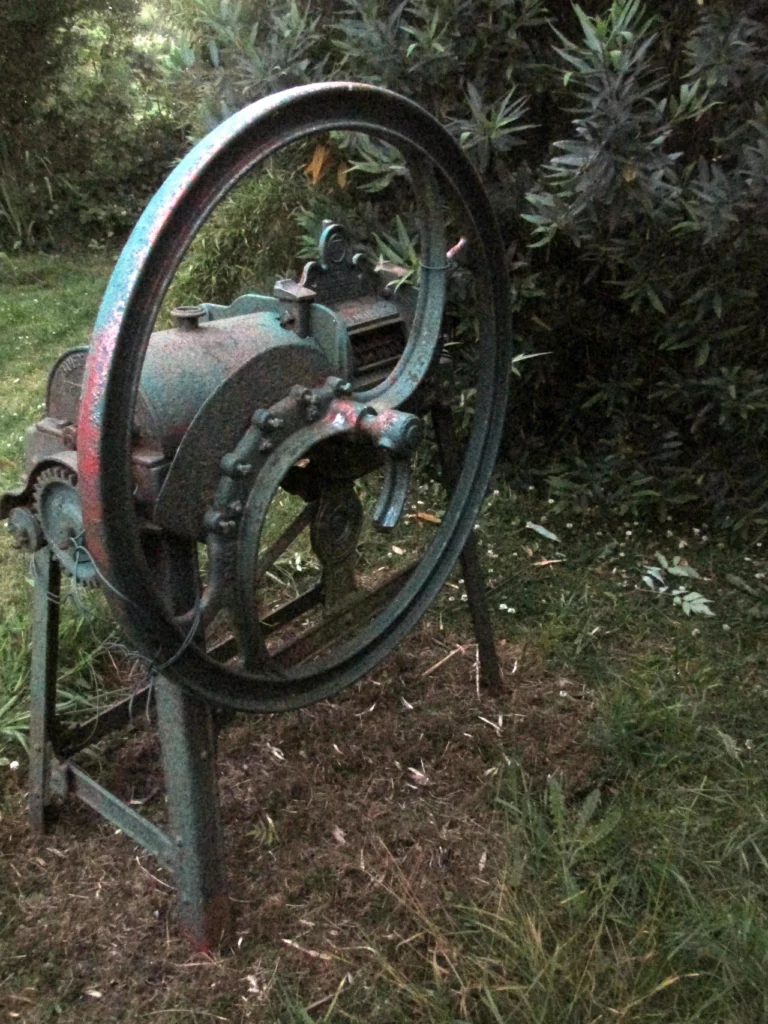Horses for Gorses
Gorse or Furze as it is commonly known here is a highly nutritious, protein filled plant that was commonly fed to horses in winter here in West Cork and all over Ireland. It was harvested and chopped with a Furze machine, you occasionally see them around still painted up as ornaments I have one myself. Our horses and ponies are tucking into the gorse at the moment and I’m delighted to see it as I know it is nutritious and because it’s a highly invasive plant that spreads quickly, the same can be said for the brambles the leaves of which they are also picking. I’ll be feeding them our Halyage from next week till they are back on grass next spring. In the past I’ve gone by the old saying “Feed them hay on Christmas Day” but we’ve more than enough round bales to keep them happy and healthy. Horses clever beasts that they are carefully turn around the tips of the plant once in their mouths so that they go down with the spikes backwards, it does seem to be a learned behavior not something they are born with.

The below is from an article first published in the Irish Times in August 2013.
According to John Feehan, who worked at University College Dublin’s faculty of agriculture, furze was such an important crop it was specifically registered in legal documents in the 15th and 16th centuries as an asset on farms.
Writing in his book, Farming in Ireland, he noted that apart from providing wood for fires, fencing and being used for medicinal purposes, it was primarily used as fodder for animals.
“In earlier times the young shoots of furze were highly valued for the winter feeding of animals – it is after all in the same plant family as peas, beans, lucerne and clovers – especially in more marginal areas where fodder was scarce but furze grew prolifically.
“It was especially valued in feeding horses, though cattle throve on it also, either fed on its own or as part of a mixed diet,” he wrote.
“Furze was widely used for feeding animals in the 18th and 19th century Ireland and doubtless long before this and was widely cultivated to this end across the course of the country, with sporadic occurrences elsewhere,” he pointed out.
He recorded instances of furze being planted as a fodder crop in Wexford in the late 1830s and in Cork and Waterford back as far as the 1680s. “In the Mallow district, nearly every farmer owned an acre or two of what was termed ‘furze meadow’.”
“Some of the claims made for furze were little short of astonishing,” he wrote, recounting how one Cork farmer sowed a very poor field of four acres with furze in the winter of 1837 and was convinced it was more nutritious than hay. He recorded that the crop was harvested annually or biennially yielding eight to 14 tons per acre of “good succulent provender” when it was cut every year and 12-24 tons were cut every other year.
It was cut with a scythe or sickle and a day’s supply for 30 head of cattle could be cut in an hour.
He stated that the Wexford farmer, Sandham Elly had reported that “20 statute acres of gorse should support 100 head of cattle for the winter six months without other food save the morning feed of mangold wurzel turnips or potatoes.
“The saving of hay for 100 cows would be at least £200 per annum, enabling the small farmer to feed eight milch cows off the same space of ground that supported only one by grazing.”
